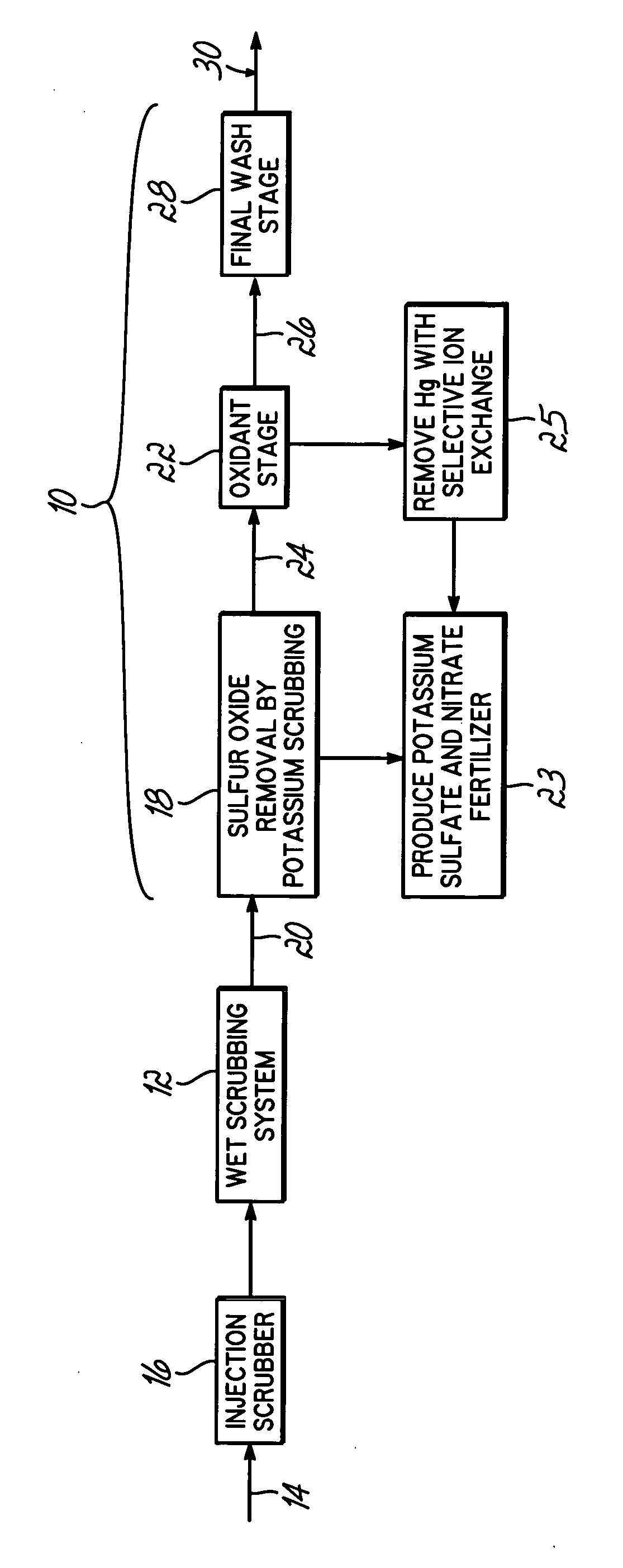Method for removing sulfur dioxide, mercury, and nitrogen oxides from a gas stream
a technology of nitrogen oxides and gas streams, applied in the direction of lithium compounds, separation processes, alkali metal sulfites/sulfates, etc., can solve the problems of limited cost effectiveness of mechanical and/or chemical processing required to achieve the mandated reduction level of sulfur oxides, low to moderate removal efficiency, etc., to achieve the effect of optimizing performance and low cost sorben
- Summary
- Abstract
- Description
- Claims
- Application Information
AI Technical Summary
Benefits of technology
Problems solved by technology
Method used
Image
Examples
example
[0075] Bench-scale screening of potential solutions for capturing NOx and elemental mercury (Hg°) was performed using a simple gaseous mixture (Hg°+NO+NO2+CO2+H2O+N2+O2) and an impinger sampling train similar to that described in the American Society of Testing and Materials Method D6784-02 (Ontario Hydro method). Testing identified solutions that effectively removed both NOx and Hg°. The results are shown in the following table:
TABLE 1BENCH SCALE TEST RESULTSNOx Removal or NOHg RemovalSolutionConversion to NO2(Hg Total and Hg°)Hydrogen PeroxideLowLowNitric Acid (40%) +30-40%30-40% Hydrogen PeroxideAcidified Potassium30-40%˜100%PermanganateChloric AcidLow30-40% 0.1 M NaClO pH adjusted ˜100%˜100%to 3.74 using0.25 mole / L KMnO4 + ˜98%˜100%2.5 mole / L NaOH(about 4 ppm(pH of 11.3)passed through)0.1 M NaClO, pH adjusted75-95%˜100%to 6 using HClNaClO pH adjusted to 5 ˜70%˜100%using HCl
[0076] The results in Table 1 indicate that there are several possible candidate solutions from which to ...
PUM
| Property | Measurement | Unit |
|---|---|---|
| acid | aaaaa | aaaaa |
| temperature | aaaaa | aaaaa |
| temperatures | aaaaa | aaaaa |
Abstract
Description
Claims
Application Information
 Login to View More
Login to View More - R&D
- Intellectual Property
- Life Sciences
- Materials
- Tech Scout
- Unparalleled Data Quality
- Higher Quality Content
- 60% Fewer Hallucinations
Browse by: Latest US Patents, China's latest patents, Technical Efficacy Thesaurus, Application Domain, Technology Topic, Popular Technical Reports.
© 2025 PatSnap. All rights reserved.Legal|Privacy policy|Modern Slavery Act Transparency Statement|Sitemap|About US| Contact US: help@patsnap.com

